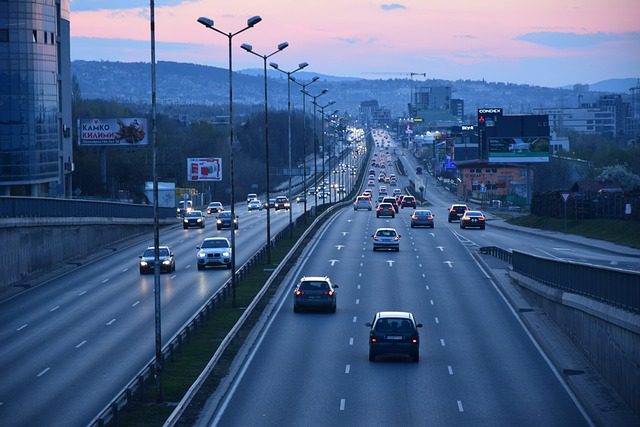Car accidents, a lamentably frequent phenomenon, cast profound shadows over both communities and individuals. These incidents create a complex web of consequences that reverberate through the fabric of society. From immediate physical and emotional trauma to extensive economic burdens and effects on community well-being, a nuanced understanding of these repercussions is imperative for crafting effective preventive strategies and support systems.
Table of Contents
I. The Immediate Aftermath: A Mosaic of Physical and Emotional Trauma
A. Physical Injuries: A Kaleidoscope of Health Implications
The aftermath of a car accident paints a diverse picture of physical injuries, ranging from the mundane to the catastrophic. Minor cuts and bruises coexist with life-altering conditions like spinal cord injuries and traumatic brain injuries, resulting in a profound toll on the human body. While emergency interventions may salvage lives, the recovery journey is often a labyrinth, impacting not only the injured individuals but also resonating through their familial and social networks.
B. Psychological Impact: The Symphony of Emotional Resonance
Beyond the canvas of physical injuries, car accidents compose a symphony of psychological impacts. Post-traumatic stress disorder (PTSD), anxiety, and depression weave into the narrative of survivors. Emotional scars extend beyond the accident, casting shadows over daily lives, relationships, and overall mental well-being. Recognizing and addressing these mental health challenges becomes an essential movement in the intricate dance of recovery.
II. Economic Burdens: The Symphony’s Financial Crescendo
A. Medical Expenses: A Crescendo of Healthcare Costs
Car accidents unleash a financial crescendo, particularly in terms of medical expenses. Emergency room visits, surgeries, rehabilitation, and ongoing medical care create a crescendo of costs that not only burdens the individuals involved but also strains healthcare systems and insurance providers. This financial symphony highlights the broader economic impact of car accidents, resonating across societal structures.
B. Loss of Income: The Economic Ballet
Beyond medical costs, car accidents choreograph a loss of income for those entangled in the collision. Injuries may lead to temporary or permanent disabilities, disrupting the economic ballet by preventing individuals from promptly returning to work or regaining their previous level of productivity. This economic interlude has a ripple effect, impacting individuals, families, and the broader community.
III. Ripple Effects on Community Well-being: The Orchestration of Impact
A. Strain on Infrastructure: The Orchestral Clash
Car accidents strain local infrastructure and emergency services, initiating an orchestral clash. The immediate response involves law enforcement, paramedics, and firefighters, straining their ability to respond to other emergencies and escalating costs for the community. The need for additional resources and personnel becomes a pressing movement in this orchestration.
B. Social Fabric: The Melody of Community Support
Communities become key players in the recovery symphony for individuals affected by car accidents. The social fabric undergoes tests as friends, family, and neighbors orchestrate support. Simultaneously, the accident may disrupt social connections and relationships, introducing a sense of isolation to those grappling with the aftermath. Strengthening community support networks becomes vital to helping individuals cope and rebuild.
IV. Preventive Measures and Road Safety Advocacy: The Overture of Proactivity
A. Educational Initiatives: The Overture of Awareness
Overtures of proactivity are indispensable to counter the far-reaching consequences of car accidents. Educational initiatives focusing on road safety, responsible driving behaviors, and the potential consequences contribute to a cultural overture of safety. These campaigns target not only individual drivers but also aim to compose a collective responsibility for community well-being.
B. Technological Innovations: The Sonata of Safety
Advancements in technology, resembling a sonata, hold the promise of reducing the frequency and severity of car accidents. Autonomous vehicles and smart traffic management systems dance together, offering hope for improved road safety. Investments in infrastructure improvements, including the choreography of better road design and maintenance, contribute to the overall sonata of safety. A harmonious representation of data and statistics guides these advancements, ensuring evidence-based decision-making.
V. The Role of Reliable Representation in Shaping Policies: The Polyphony of Governance
A. Data-driven Governance: A Polyphony of Decision Making
Reliable representation of accident data forms the polyphony essential for policymakers to make informed decisions. Accurate statistics on the frequency, causes, and outcomes of car accidents compose the foundation for designing effective policies and interventions. This data-driven polyphony allows for targeted initiatives that address specific risk factors and enhance overall road safety.
B. Legal and Insurance Symphony: The Harmonization of Outcomes
Accurate representation of car accident data harmonizes outcomes in the legal and insurance sectors. From determining liability in legal proceedings to orchestrating risk assessments and setting insurance premiums, reliable data ensures a symphony of fair and just outcomes. Improving the accuracy and accessibility of accident data harmonizes these processes, benefiting both individuals and the broader community.
Conclusion: Toward a Harmonious and Resilient Future
In deciphering the intricate consequences of car accidents on communities and individuals, a symphony emerges, requiring a multi-faceted approach. Addressing immediate physical and emotional trauma, navigating economic burdens, and fortifying community support networks are integral movements. Furthermore, investing in preventive measures, advocating for road safety, and providing reliable legal representation are crucial steps in creating a safer and more resilient future for all. Recognizing the interconnectedness of these movements, society can orchestrate efforts to reduce the frequency and severity of car accidents, mitigating their enduring impact on individuals and communities alike.
Featured Image by Zdravko Shishmanov from Pixabay

Early in his journalism college years, Kerry Tucker had a revelation: there were not nearly enough law communicators. People’s difficulties in understanding the law, procedures, and how the justice system worked stemmed from the fact that no one took the patience to explain complicated matters to them. Therefore, he took upon himself the task of helping people navigate legal matters easier. He works with attorneys and other legal journalists and spends time doing research so that everyone – from a mother whose child got a bike injury to a company needing insurance counsel – to find the actionable answers they are looking for.




